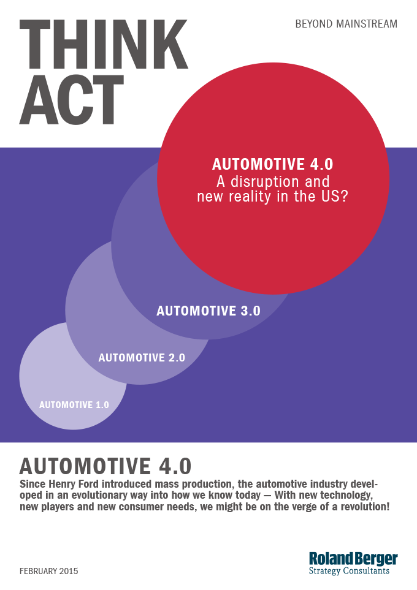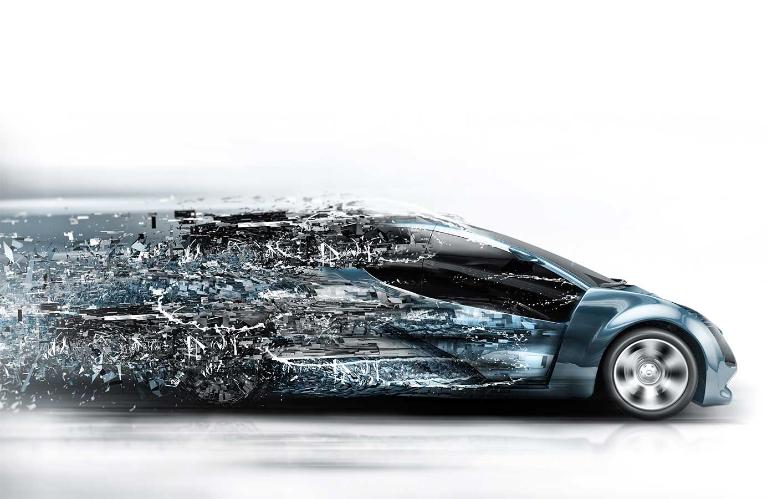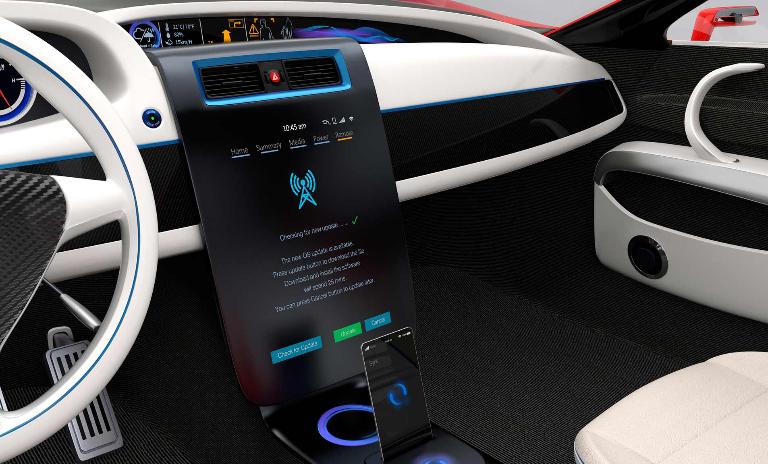Automotive 4.0
![{[downloads[language].preview]}](https://www.rolandberger.com/publications/publication_image/cover_auto4_0_download_preview.png)
More than a dozen technological trends are developing in the industry, yet only three show the potential for radical disruption.


For the first time since Henry Ford introduced mass production, the automotive industry may be on the verge of another revolution—and this one is driven by digital. The appearance of automated prototypes from Google, Chevrolet, and Toyota are pioneering changes in how consumers will use, buy, and own cars.
More than a dozen technological trends are developing in the industry, yet only three show the potential for radical disruption: connectivity, shared mobility, and automated driving. With automotive’s future so full of uncertainty, industry players need to assess what effect this will have on business.
Both current technology and the value chain undergo profound changes. Driverless cars are impacting both interior design and user experience, with short-distance vehicles shrinking into utility-oriented pods and long-distance or premium models focusing on increased leg room and entertainment systems.
Beyond design, V2V networks are turning dreams of shared mobility and mobility-on-demand into a reality. As consumers adjust to this more convenient user experience, families are expected to make a shift from several necessary vehicles to the ownership of only one luxury car.
With early, urban adopters and flagship automated models paving the way, we can look towards increased acceptance in urban and suburban areas through the mid-term, although regulations, cost, and technological development will still offer some constrictions. In the long-term, 2030 and beyond, we can expect a lowering demand for individually owned vehicles as the acceptance of shared mobility and automated driving converge into a new industry paradigm. These radical changes are already in sight, forcing OEMs to weigh up the risks and opportunities of Automotive 4.0. Traditional markets will shrink—and up to USD 192 billion—but mobility-on-demand services and low-cost pod manufacturing present significant opportunities to make up this revenue. The industry is being put to the test, and those willing to adapt can ace it.

![{[downloads[language].preview]}](https://www.rolandberger.com/publications/publication_image/cover_auto4_0_download_preview.png)
More than a dozen technological trends are developing in the industry, yet only three show the potential for radical disruption.

